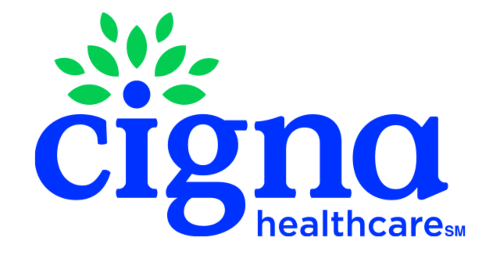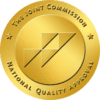Lean, commonly known as purple drank, sizzurp, or dirty Sprite, is more than just a popular topic in hip-hop songs—it’s a dangerous concoction that can lead to serious health issues and addiction. This guide aims to shed light on what lean is, its effects, and why understanding its risks is crucial for public health awareness, particularly among the youth.
What is Lean?
Lean is a recreational drug cocktail typically made by mixing prescription-grade cough syrup containing codeine and promethazine with a soft drink and hard candy. The drink is notorious for its euphoric side effects, which often appeal to young users. The codeine in lean acts as a central nervous system depressant, while promethazine causes sedation and acts as an antihistamine. Together, these substances create significant impairment and a high risk of addiction.
The History of Lean
The concoction now known as lean originated in the Houston, Texas, music scene in the 1960s and gained popularity in the 1990s through the hip hop community. It has been referenced by various artists over the decades, contributing to both its mystique and its misunderstood allure. This historical context is important as it illustrates how lean has woven itself into the fabric of certain music and cultural scenes, making it more challenging to combat its use.
How is Lean Made?
To make lean, users mix cough syrup containing codeine and promethazine with a soda—usually a fruit-flavored one—to mask the bitter taste of the medicine. Often, a piece of hard candy, like a Jolly Rancher, is added to enhance the sweetness. While the ingredients are simple, the concoction creates a powerful mixture that can severely depress the nervous system.
The Effects of Lean on the Body
The effects of lean on the body can be broken down into short-term and long-term impacts. In the short term, users may experience sedation, euphoria, and a dissociative feeling from their surroundings, which are often described as desirable effects. However, these are quickly overshadowed by negative effects such as impaired motor skills, nausea, dizziness, and memory problems. Long-term use can lead to more severe consequences like addiction, severe constipation, dental issues, weight gain, and potentially fatal respiratory depression.
Why Lean is Dangerous?
Lean’s danger lies in its highly addictive nature and the severe impact it can have on one’s health. The drug can cause life-threatening respiratory issues, particularly when mixed with other sedatives or alcohol. Its addictive properties can lead individuals down a path of dependency that requires professional treatment to overcome, illustrating the need for awareness and education on the subject.
How to Recognize Lean Usage
Identifying someone using lean can be challenging, especially since many of its effects can mimic those of other substances. Symptoms include slurred speech, uncoordinated movements, lethargy, and changes in behavior such as increased secrecy or withdrawal from social activities. Recognizing these signs early can be key in intervening before the addiction becomes more severe.
Treatment and Recovery from Lean Addiction
Recovery from lean addiction typically involves a combination of medical detox and comprehensive behavioral therapy. Detox helps manage withdrawal symptoms under medical supervision, while therapy addresses the underlying reasons for substance use. Long-term recovery is supported through ongoing counseling and support groups, highlighting the importance of a sustained commitment to recovery.
Prevention: Strategies to Avoid Lean Usage
Preventive strategies involve educating the public, particularly young people, about the risks of lean through school programs and community outreach. Encouraging open discussions about the effects of drugs and providing a supportive community environment can help deter use and promote healthier choices.
Substance Abuse and Lean
Lean is a form of substance abuse that can lead to severe health complications. Substance abuse treatment centers offer specialized programs to address the unique challenges posed by lean addiction. These programs typically include detoxification, behavioral therapy, and support groups to help individuals recover from lean addiction and other substance use disorders.
Codeine Addiction and Lean
The primary addictive component in lean is codeine, an opioid that can lead to dependency and addiction. Codeine addiction treatment involves managing withdrawal symptoms, providing behavioral therapy, and offering support to prevent relapse. Understanding the role of codeine in lean addiction is crucial for effective treatment and recovery.
Mental Health and Lean Addiction
Mental health treatment is often a critical component of recovering from lean addiction. Individuals using lean may suffer from underlying mental health issues that need to be addressed as part of their treatment. Integrating mental health services into addiction treatment programs can help individuals achieve long-term recovery and improve their overall well-being.
Medication-Assisted Treatment for Lean Addiction
Medication-assisted treatment (MAT) can be an effective approach for managing lean addiction. MAT involves using medications to reduce withdrawal symptoms and cravings, combined with counseling and behavioral therapies. This integrated approach helps individuals overcome addiction and supports their recovery journey.
The Role of Drug Rehab in Lean Addiction Recovery
Drug rehab centers play a vital role in helping individuals recover from lean addiction. These facilities provide a structured environment where individuals can receive medical care, therapy, and support to overcome their addiction. Drug rehab programs are designed to address both the physical and psychological aspects of addiction, promoting long-term recovery.
Sober Living and Lean Recovery
Sober living environments offer a supportive community for individuals recovering from lean addiction. These living arrangements provide a drug-free environment where individuals can focus on their recovery, develop healthy habits, and receive ongoing support from peers. Sober living is often a critical step in maintaining sobriety after completing a rehab program.
Overcoming Addiction
Lean may be popularized in certain cultural circles, but the reality is far from glamorous. By understanding and addressing the serious risks associated with its use, communities can help prevent the spread of this dangerous substance and support those who are struggling with addiction.
If you or a loved one are struggling with addiction to lean or another substance use disorder, get in touch with Safe and Sound Treatment.
FAQs
Codeine is the primary addictive ingredient in lean, which is an opioid.
Yes, consumption of lean can lead to fatal respiratory depression, especially when combined with other depressants.
Yes, with proper treatment and support, individuals can recover from lean addiction and lead healthy lives.
Through targeted education and public health campaigns that highlight the dangers of lean, communities can reduce its allure.
Many addiction treatment centers and hotlines are available to help those struggling with lean addiction.


















